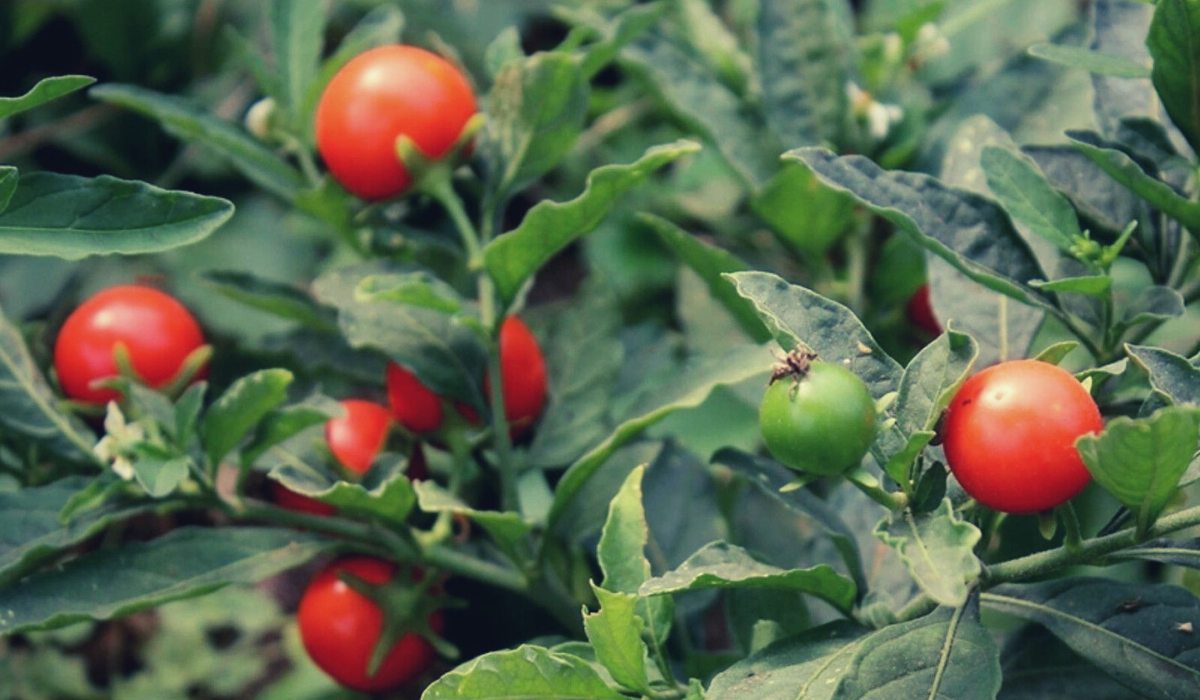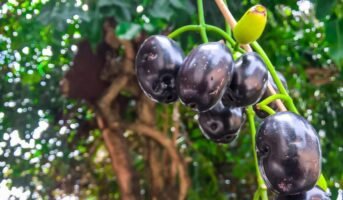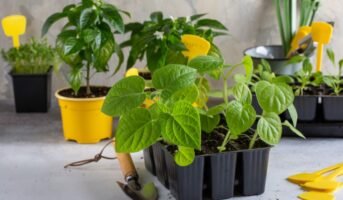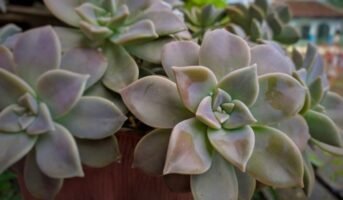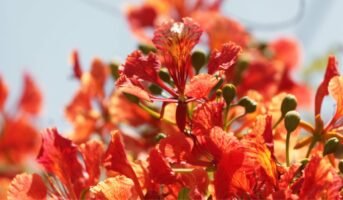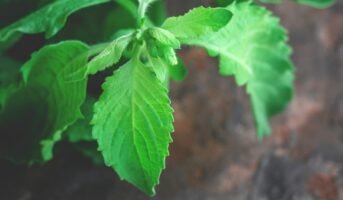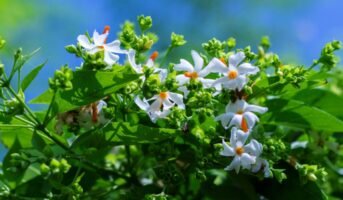The Indian Ayurvedic medicinal system holds Withania somnifera (Ashwagandha plant) in high regard as a Rasayana (tonic). It is utilised for a range of disease processes and is specifically used as a nervine tonic. In light of these facts, numerous scientific studies were done, and its adaptogenic and anti-stress qualities were carefully examined.
In experimental models, rats’ swimming endurance is enhanced, and the stress-related changes in cortisol concentration and ascorbic acid are prevented. Pretreatment with Withania somnifera (WS) showed considerable defence against stress-related stomach ulcers. WS is ineffective against Chinese hamster ovary (CHO) cell carcinoma. It was also found to be effective in animals with urethane-induced lung adenoma.
See also: Epiphyllum oxypetalum: Benefits, medicinal uses, and plant care
Ashwagandha plant: Quick facts
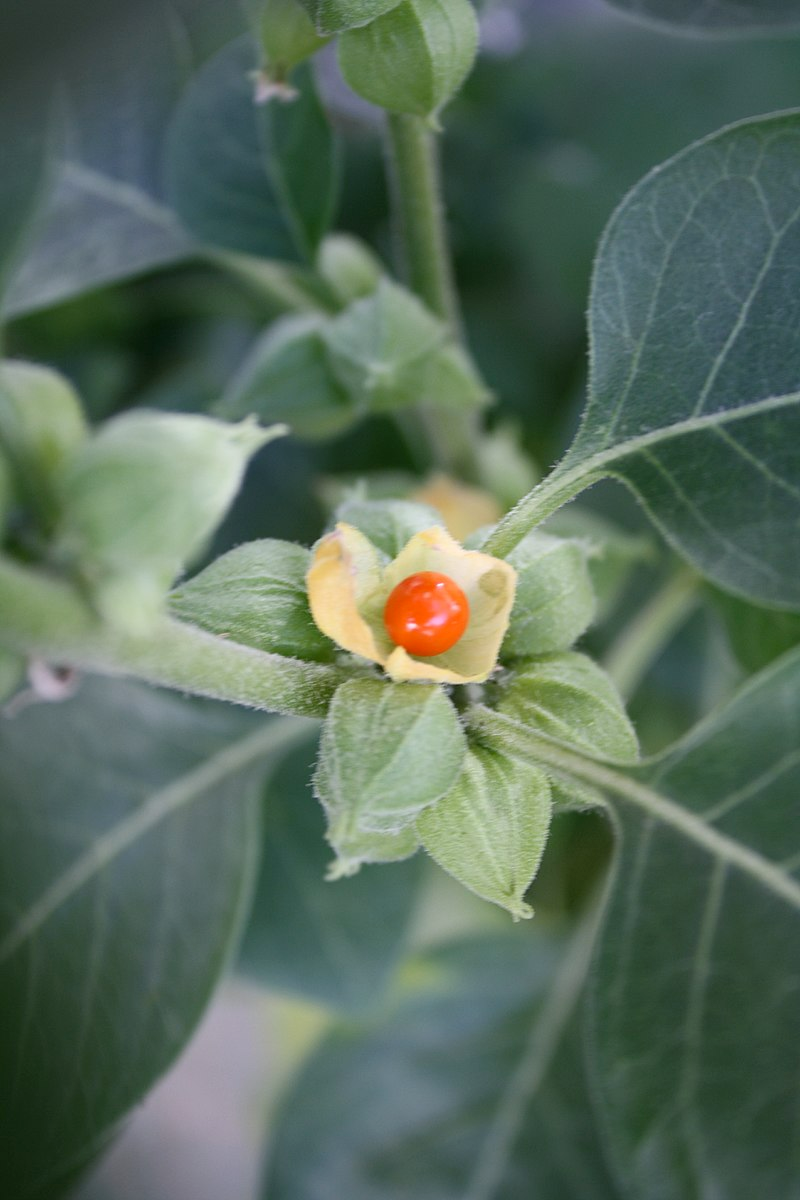
Source: Pinterest
Know about December Flower
| Botanical name | Withania somnifera |
| Plant type | Nightshade family or Evergreen shrub |
| Common name | Ashwagandha or winter cherry |
| Height | Up to 3 feet tall |
| Foliage colour | Dull green |
| Seasonal compatibility | Late rainy season |
| Differentiating features | Upright, greyish, and evergreen shrub, the plant has long tuberous roots with short stems, petiolate and oblong leaves |
| Geographical Zones | Punjab, Gujarat, Rajasthan, Maharashtra, Madhya Pradesh, Uttar Pradesh, and plains, extending to the hilly regions of Jammu and Himachal Pradesh, are among the states in northwest India where the species is widely spread. Additionally, it is grown in several areas of Madhya Pradesh and Rajasthan. |
| The light needed | Full sun and fairly dry conditions |
| Flower colour | Greenish-yellow |
| Proliferation | Plant seeds whenever the temperature is about 70 F, spacing them out 2 cm (20 C). |
| Problems it solves | Maintains both mental and physical youth. |
| The soil needed | In light red soil or sandy loam with a pH of 7.5 to 8.0 and sufficient drainage, ashwagandha grows nicely. |
| Fragrance | The herb’s fresh roots smell strongly like horses. |
| Stem length | 1-1.5 cm in diameter |
| Bush size | Bushes can reach heights of three feet or more. |
| Petals | 10 mm long, 3-6 fascicled together, pedicels 3-4 mm long |
| Temperature range | Optimal temperature for growth is between 70 and 95 degrees |
Known about Epiphyllum
Ashwagandha plant: How to grow
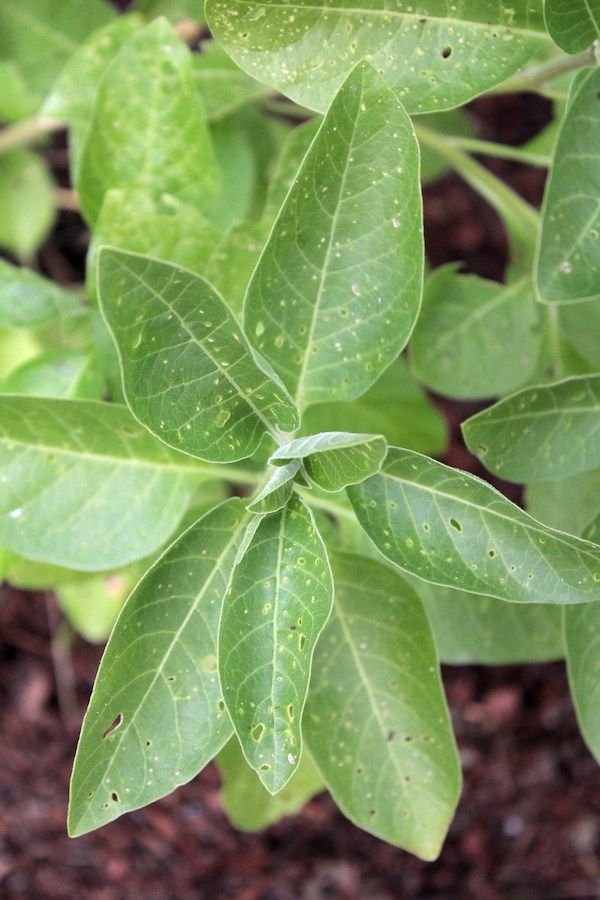
Source: Pinterest
Nursery raising
It is spread through seeds. In thoughtfully constructed nursery beds, new seedlings are sowed. Although the transplanting approach is preferable for superior quality and export purposes, the broadcast method can be used in the main field. A well-maintained nursery is necessary for export. The nursery bed is typically raised off the ground and is thoroughly mixed with sand and compost before use. One hectare of the main field needs about 5 kg of seeds to be planted. June–July is when the nursery is raised. To prevent wilt and illnesses transmitted by seeds, seeds are treated with carbendazim. Just prior to the start of the monsoon, seeds are sowed and thinly covered with sand. In 5 to 7 days, the seeds begin to sprout. Seedlings that are about 35 days old are transplanted onto the main field.
Field preparation
Before it rains, 2 to 3 ploughing, discing, and/or harrowing should be done. The ground has been well ploughed, ground down, and brought to a beautiful tilth. Manure from farms totalling 10 to 20 tonnes is used. Then the field is levelled.
Transplanting
Ridges are created at a spacing of 60 cm after the manures have been integrated into the soil. Planting healthy seedlings requires a 30 cm separation. In some locations, spacing of 45 cm x 30 cm or 60 cm × 60 cm is also used. However, a spacing of 60 cm × 30 cm is thought to be ideal, with a plant population of roughly 55000 seedlings per hectare.
Sowing method and seed rate
For the broadcasting method, a seed rate of 10 to 12 kg per ha is sufficient. They can also be sewn in lines. The line-to-line approach is chosen because it boosts root formation and facilitates successful cross-cultural interactions. Typically, the seeds are spread between 1 and 3 cm deep. In all techniques, seeds should be coated with fine dirt. Maintaining a line-to-line spacing of 20 to 25 cm and a plant-to-plant spacing of 8 to 10 cm is recommended. According to soil fertility, a distance might be increased in fertile soil.
Seed treatment
Before planting, the seed should be treated with dithane M45 (Inofil M45) or thirum at a rate of 3 g/kg seed to prevent illnesses that are transmitted through the seed.
Ashwagandha plant: How to maintain
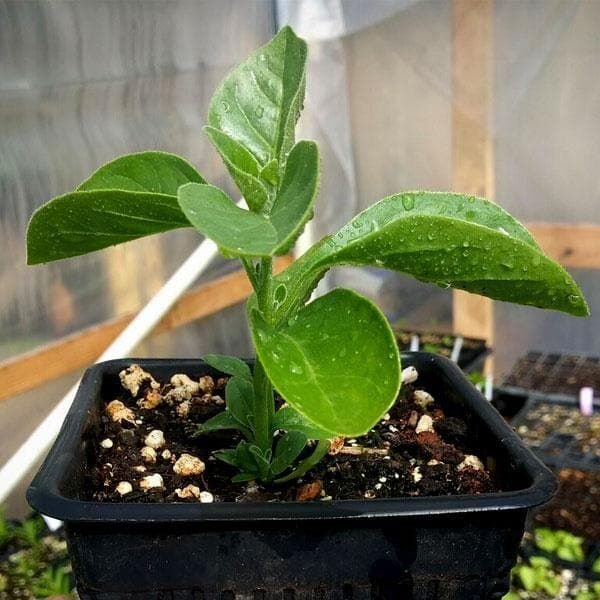
Source: Pinterest
There are several aspects of maintaining the Ashwagandha plant, some of which are discussed below.
Weeding and thinning
Grown-up seedlings produced by broadcast sowing or inline planting in furrows should be trimmed out by hand 25 to 30 days after seed sowing in order to maintain a plant population of roughly 30 to 60 plants per sq. m. The composition and fertility of the soil may ultimately determine the plant density to be maintained. The population is kept high on marginal soil. The population ought to ideally be kept at a lower level if fertiliser is used. The field typically needs to be weeded twice, the first time within 20–25 days of seeding and the second time after 20–25 days following the initial weeding.
Fertilisers and manures
Heavy quantities of manures and fertilisers are not necessary for the crop. It responds favourably to organic manures, and it is advised to add 10 tonnes FYM or 1 tonne vermicompost per hectare. For higher yield, applying 15 kg of phosphorus and 15 kilogrammes of nitrogen per hectare is good.
Watering and irrigation
This crop suffers from too much rain or water. After transplantation, light rain helps the plants establish more successfully. If necessary, irrigation could be used to save lives. The crop may receive irrigation once every ten days in irrigated situations.
Diseases and pests
In this crop, there are no known significant pests. When an insect damages a crop, 2 to 3 sprays of nuvan or rogor at 0.6% should be used. For aphid, mite, and insect assault, a foliar spray application of 0.1% – 0.3% kelthane and 0.5% malathion at intervals of 10-15 days was shown to be quite effective.
We see diseases like blight and seedling rock. Under situations of high warmth and humidity, seedling mortality worsens. By using seeds free of illness and, as was previously mentioned, treating seeds properly before they sprout, the disease can be reduced to a minimum. When sowing, carbofuran should be applied at a rate of 2-2.5 kg/ha. Neem cake can also be used. It will prevent insect and nematode-caused root damage. Crops are also protected through the use of timely seeding, crop rotation, and maintaining a well-drained area.
Harvesting
The drying out of the leaves and the yellow-red berries serve as indicators of crop maturity. Beginning in December, plants begin to bloom and develop fruit. Digging is used to harvest the crop’s roots between January and March, between 150 and 180 days after seeding. When digging, there should be moisture in the soil. Using a country plough or motorised tiller or a country plough, roots are pulled out or ploughed. Care must be taken to remove the tap root without injuring any lateral roots, no matter how small.
Post-harvesting
By cutting the stem between 1 and 2 cm above the surface, the roots are separated from the aerial component. The roots are dug up, cleaned, and then cut into 7 to 10-cm-long pieces to be dried in the sun in a shed. Roots should be dried to a moisture content of 10–12%. The following three to four grades of root pieces can be determined by their length and thickness:
A grade root: Solid, bright, and pure white root portions up to 7 cm in diameter.
B grade root: White and bright, with a root piece up to 5 cm in length and 1 cm in diameter.
Iii. C grade root: Solid, side branches, roots up to 3 to 4 cm long, less than 1 cm in diameter.
Lower Grade: Chopped, little, semi-solid, yellowish roots that are quite thick.
The excellent quality commands a premium price because of its thick and lengthy root. It should be preserved in tin containers to prevent moisture and fungal infection on the dried roots.
Each berry is picked by hand. To remove the seeds, they are crushed and dried.
Ashwagandha plant: Uses and benefits

Source: Pinterest
Some patients’ dermatosarcoma and uterine fibroids were treated with long-term WS therapy. It has a cognition-promoting impact and has been beneficial for both children with memory loss and elderly seniors who are losing their memories. Additionally, it was discovered to be helpful in treating neurological illnesses like Parkinson’s, Huntington’s, and Alzheimer’s disease.
It is known to promote dendritic growth and to have a GABA-mimicking effect. It improves the health of the mitochondria while lowering anxiety and increasing energy. It has reportedly been successful in treating clinical cases of rheumatoid arthritis and osteoarthritis. It is an anti-arthritic drug and anti-inflammatory in nature. Large-scale investigations are needed to show its clinical effectiveness in disorders linked to stress, neurological diseases, and malignancies.
In addition to its palliative effects, such as analgesic, rejuvenating, regenerating, and growth-promoting properties, this medicinal plant is found to have anti-epileptic, anti-coagulant, antipyretic, anti-inflammatory, anti-oxidant, anti-arthritic, anti-depressant, and anti-diabetic efficacies.
FAQs
How long does the ashwagandha plant take to grow?
160–180 days after sowing, the ashwagandha crop would be ready for harvesting. To separate the roots from the aerial sections of the plant, the entire plant must be uprooted. The stem should then be cut between one and two cm above the crown. Then, to make drying easier, cut them into 8–10 cm-long pieces. Rounded roots.
Where does the ashwagandha grow best?
Ashwagandha prefers full sun and typically dry settings, and it has low to moderate water requirements. After the last frost, ashwagandha can be directly sown outside in soil that has been evenly moistened and buried 3/8
How do you take care of the ashwagandha plants?
In order for water to flow out fast, it needs sandy soil that drains effectively. Between 7.5 and 8, is the ideal pH range which is neutral to slightly alkaline. On soil that continues to retain water and becomes saturated, ashwagandha cannot be grown.
Which soil works best for growing the ashwagandha plant?
In light red soil or sandy soil with a pH of 7.5 to 8.0 and sufficient drainage, ashwagandha grows nicely. The cultivation of such dark or heavy soils is appropriate. It is cultivated as a late rainy season crop (Kharif).
How much sun is required to grow the ashwagandha plant?
Ashwagandha prefers full sun and typically dry settings, and it has low to moderate water requirements. After the last frost, ashwagandha can be directly sown outside in soil that has been evenly moistened and buried 3/8
Is the ashwagandha plant toxic to pets?
There are no known toxic effects; hence you can plant ashwagandha at home if you have pets.
Housing News Desk is the news desk of leading online real estate portal, Housing.com. Housing News Desk focuses on a variety of topics such as real estate laws, taxes, current news, property trends, home loans, rentals, décor, green homes, home improvement, etc. The main objective of the news desk, is to cover the real estate sector from the perspective of providing information that is useful to the end-user.
Facebook: https://www.facebook.com/housing.com/
Twitter: https://twitter.com/Housing
Email: [email protected]
